To the lecture series English top page
Comments on Lecture 23 "Classical Illusion Caused by Depth Perception"
Comment 1. Answer to the question"
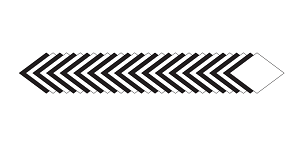 When we see this figure, we imagine a pile of white and black squares placed on top of the other alternatingly. So we understand that the rightmost square is nearest to the viewer and the other squares are placed farther as we move to the left. So the projected images of the left squares are more smaller than actual sizes when compared with those of the right squares. Thus our brains corrct the sizes of the left squares more than the sized of the right squares. As the result, we feel the left squares are larger and consequently the heights are larger in the left. This is the interpretation of the shevron
illusion in terms of the depth perception.
When we see this figure, we imagine a pile of white and black squares placed on top of the other alternatingly. So we understand that the rightmost square is nearest to the viewer and the other squares are placed farther as we move to the left. So the projected images of the left squares are more smaller than actual sizes when compared with those of the right squares. Thus our brains corrct the sizes of the left squares more than the sized of the right squares. As the result, we feel the left squares are larger and consequently the heights are larger in the left. This is the interpretation of the shevron
illusion in terms of the depth perception.
Comment 2. Brightness constancy
When we paste a checkerboard pattern on nonflat surface and see it under the illumination from above, the part of the surface facing upward appears brighter than the part of the surface facing downward. However, we perceive that they are of the same color. This function of our brains is called the brightness constancy.

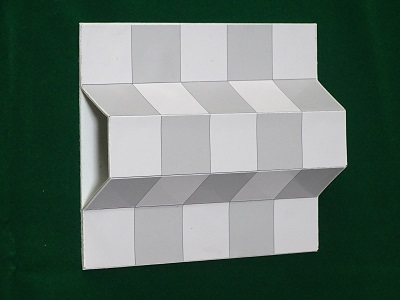
In the center column of the left figure, the second and the fourth cells appear to have different gray colors, but they have the same color as shown in the right figure. This illusion is called Adelson's corrugated Mondrian illusion. This illusion occurs as the result of the brightness constancy.
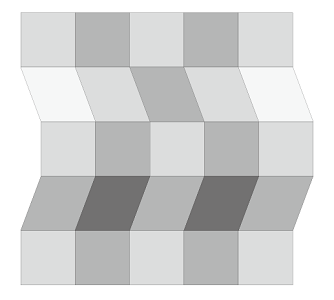
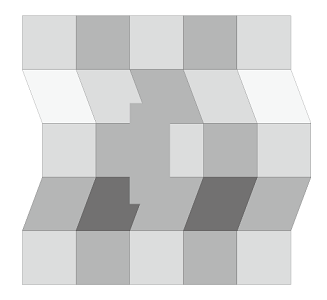
Comment 3. Size consancy
When we take a picture of two objects with the same size that are in different distances from the camera, the image of the nearer object is larger than the other in the picture plane. This is the result of the perspective nature. However, our brains can interpret the sizes of the objects according to their distances, and can recognize that they are of the same size. This ability is called the size constancy.
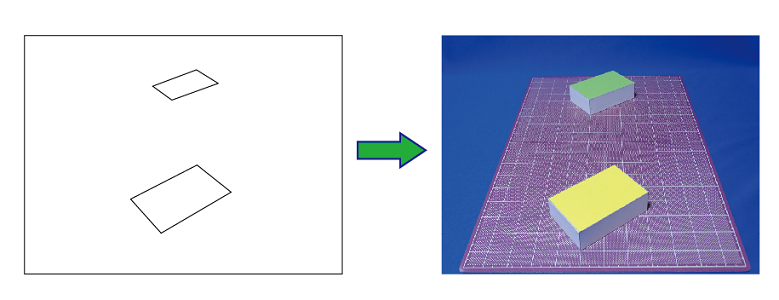
If there are two objects whose sizes are the same in a picture, on the other hand, our brains interpret their 3D sizes according to the distances from the viewpoint, and consequently, the object placed in larger distance is interpreted as bigger than the other, which is the corridor illusion. Thus the corridor illusion occurs when the size constancy works correctly.
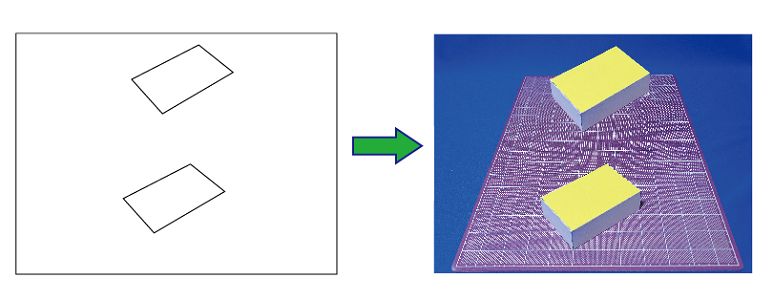
Comment 4. Shape constancy
When we take a picture of two boxes of the same shape, their shapes in the picture planes are different because of the perspective nature. However, we can understand that they are of the same shape. This is because our brains can interpret the 3D shapes according to their distances from the camera. This ability is called the shape constancy.
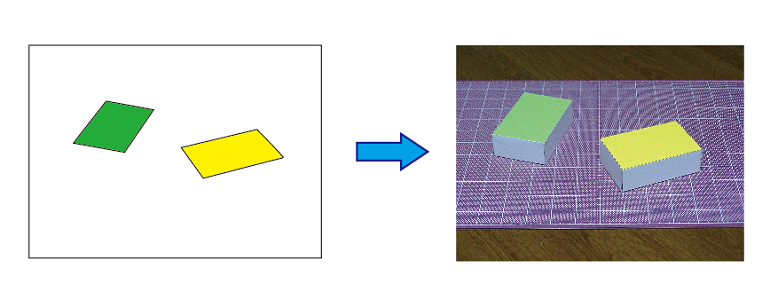
The shape constancy makes us to perceive two objects whose shapes are the same in the picture plane as different shapes. The Shepard illusion occurs because of this reason. Therefore, the Shepard illusion is the result of our brains' normal behavior according to the shape constancy.
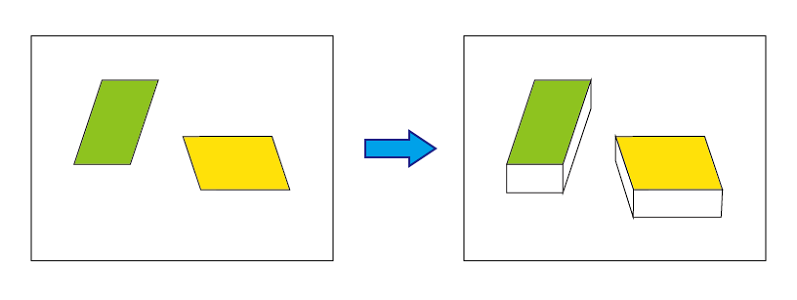
 When we see this figure, we imagine a pile of white and black squares placed on top of the other alternatingly. So we understand that the rightmost square is nearest to the viewer and the other squares are placed farther as we move to the left. So the projected images of the left squares are more smaller than actual sizes when compared with those of the right squares. Thus our brains corrct the sizes of the left squares more than the sized of the right squares. As the result, we feel the left squares are larger and consequently the heights are larger in the left. This is the interpretation of the shevron
illusion in terms of the depth perception.
When we see this figure, we imagine a pile of white and black squares placed on top of the other alternatingly. So we understand that the rightmost square is nearest to the viewer and the other squares are placed farther as we move to the left. So the projected images of the left squares are more smaller than actual sizes when compared with those of the right squares. Thus our brains corrct the sizes of the left squares more than the sized of the right squares. As the result, we feel the left squares are larger and consequently the heights are larger in the left. This is the interpretation of the shevron
illusion in terms of the depth perception.







